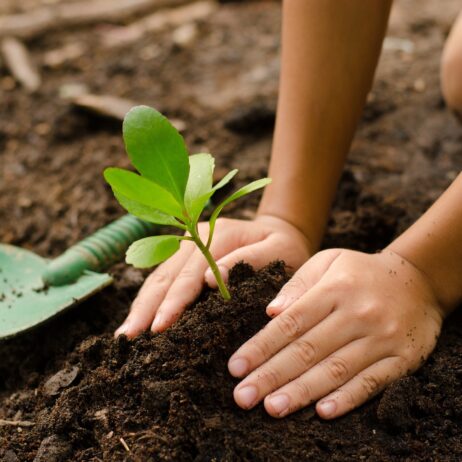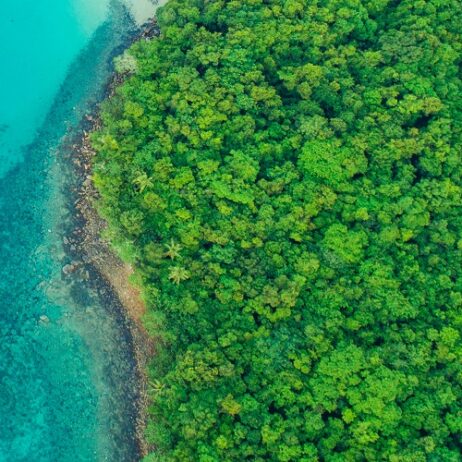
MBG-Madagascar and the local community planting trees to restore the Ankarabolava-Agnakatrika forests. Credit: Fidy Ratovoson
Exciting progress has been made by our partner Missouri Botanical Garden – Madagascar Programme (MBG-Madagascar) towards the protection of the highly threatened Ankarabolava-Agnakatrika forests. We are delighted to share what they have achieved so far this year.
More land for people and wildlife
MBG-Madagascar have purchased 13 plots of land, adding 35.44 hectares (88 acres) to the Ankarabolava-Agnakatrika Forest Protected Area. This is an incredibly precious and important region, representing the last remaining forested area in the Vangaindrano District. It is home to at least 50 threatened animal and plant species, such as the Critically Endangered White-collared Lemur (Eulemur cinereiceps) and the miniature Elongate Leaf Chameleon (Palleon nasus).
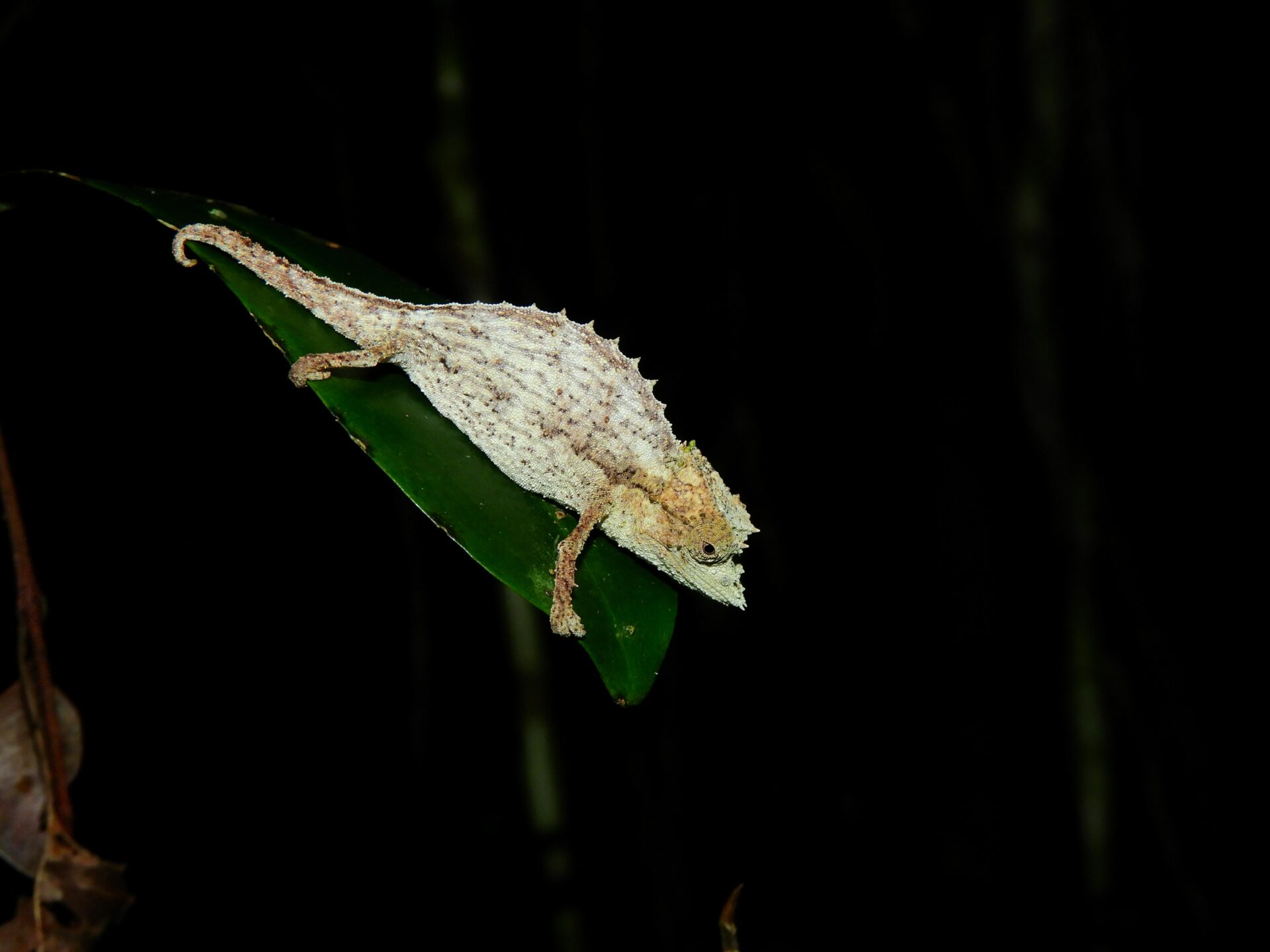
This chameleon, the Elongate Leaf Chameleon, is only found in the humid forests of Madagascar, which are rapidly disappearing. Credit: Andrianjaka Rijaniaina Jean Nary.
MBG-Madagascar also visited 21 potential sites around the towns of Vohipaho and Tsianofana, checking the suitability of these for further expansion of the Ankarabolava-Agnakatrika Forest Protected Area. In the coming months, they will narrow these down to the best options, allowing more land to be purchased and protected.
New nurseries, new forests
Most of the land in this region is degraded and needs a helping hand to return to thriving forest. MBG-Madagascar have made significant progress on land restoration, with 11,000 saplings planted out by the local community.
To support these efforts, they have also made improvements to their tree nurseries and even set up two new ones. These have been put to very good use so far this year, providing a great start in life for over 40 woody plant species.
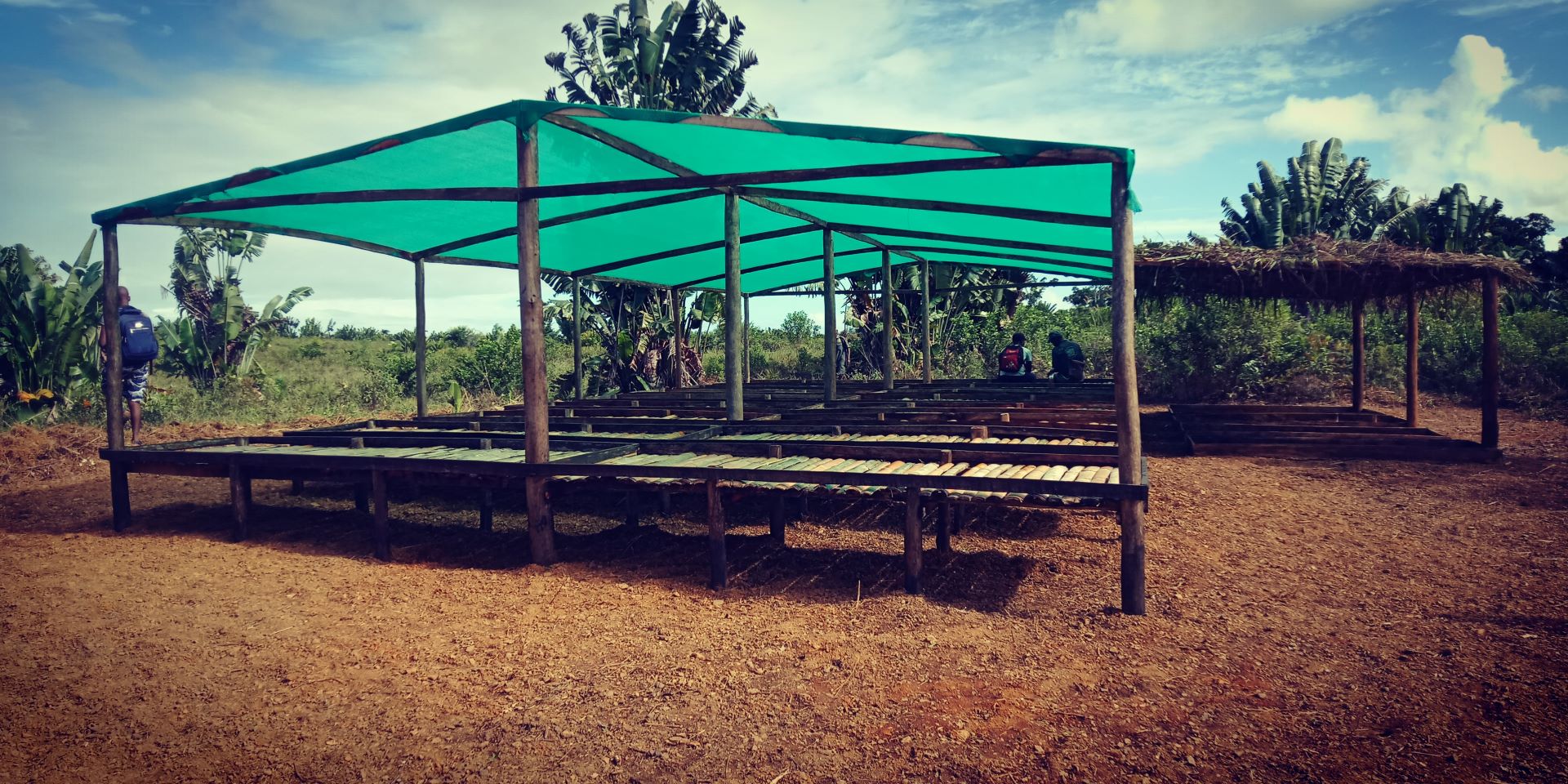
One of the new tree nurseries set up by MBG-Madagascar to increase the number of saplings they can look after. Credit: Fidy Ratovoson
New insights into the species that call this place home
MBG-Madagascar have also performed their first survey to find out what reptiles and amphibians live in the Ankarabolava-Agnakatrika Protected Area. Although the data is still being analysed, we can share that a staggering 61 species have been seen so far, everything from geckos and frogs to snakes and skinks. Several of these are highly threatened like the wonderfully camouflaged frog Guilbemantis diphonus, which is Critically Endangered and known from just two specimens.
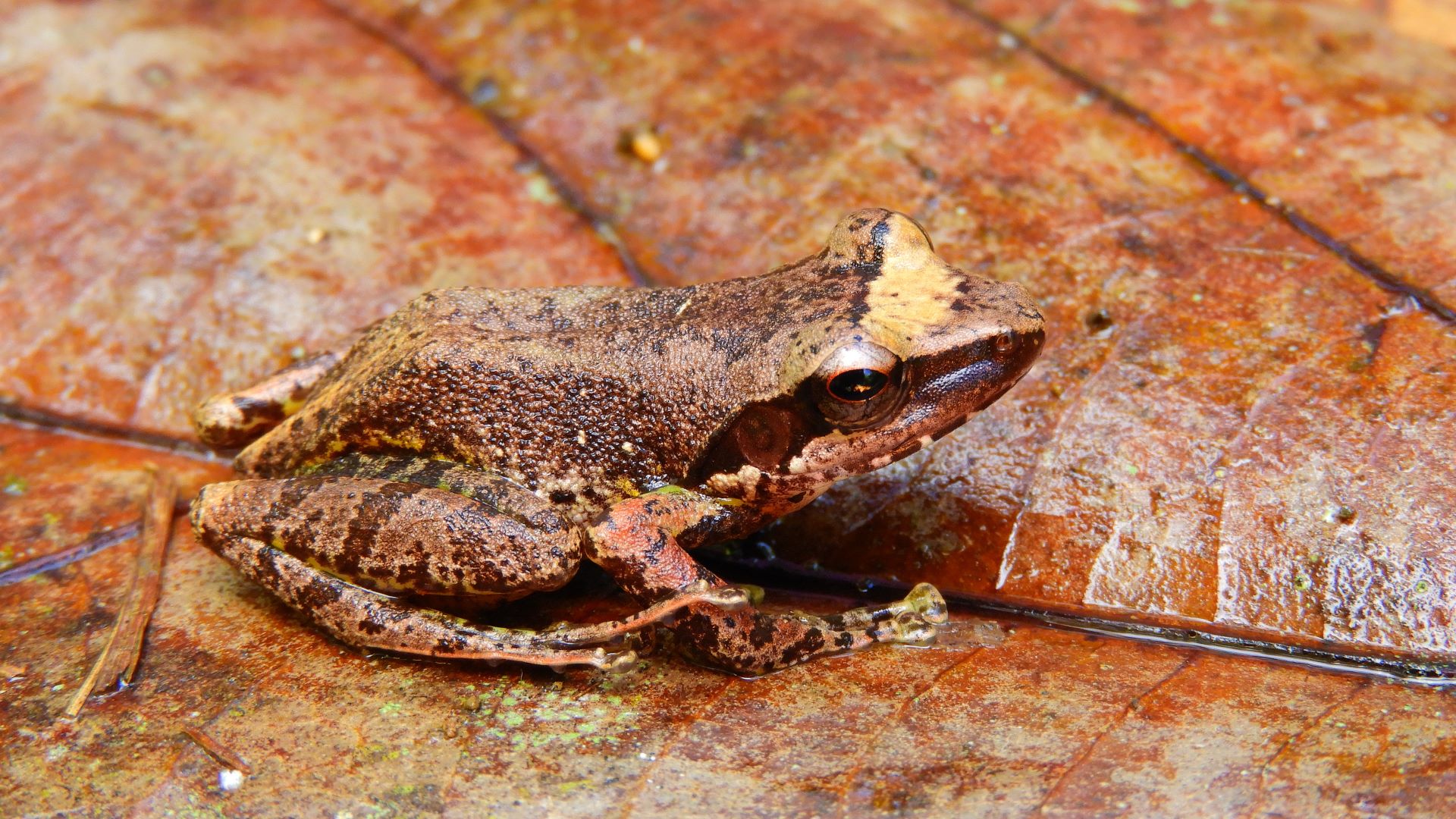
This frog Guilbemantis diphonus is Critically Endangered and known from only two specimens. Credit: Andrianjaka Rijaniaina Jean Nary.
MBG-Madagascar also hosted one of the world’s leading lemur researchers Dr. Marina Blanco. During her 2-weeklong fieldtrip hiking through the humid forest, she confirmed that these trees are home to the Geoffroy’s dwarf lemur (Cheirogaleus major), which is IUCN-classified as Vulnerable, and the Endangered Anosy mouse lemur (Microcebus tanosi).
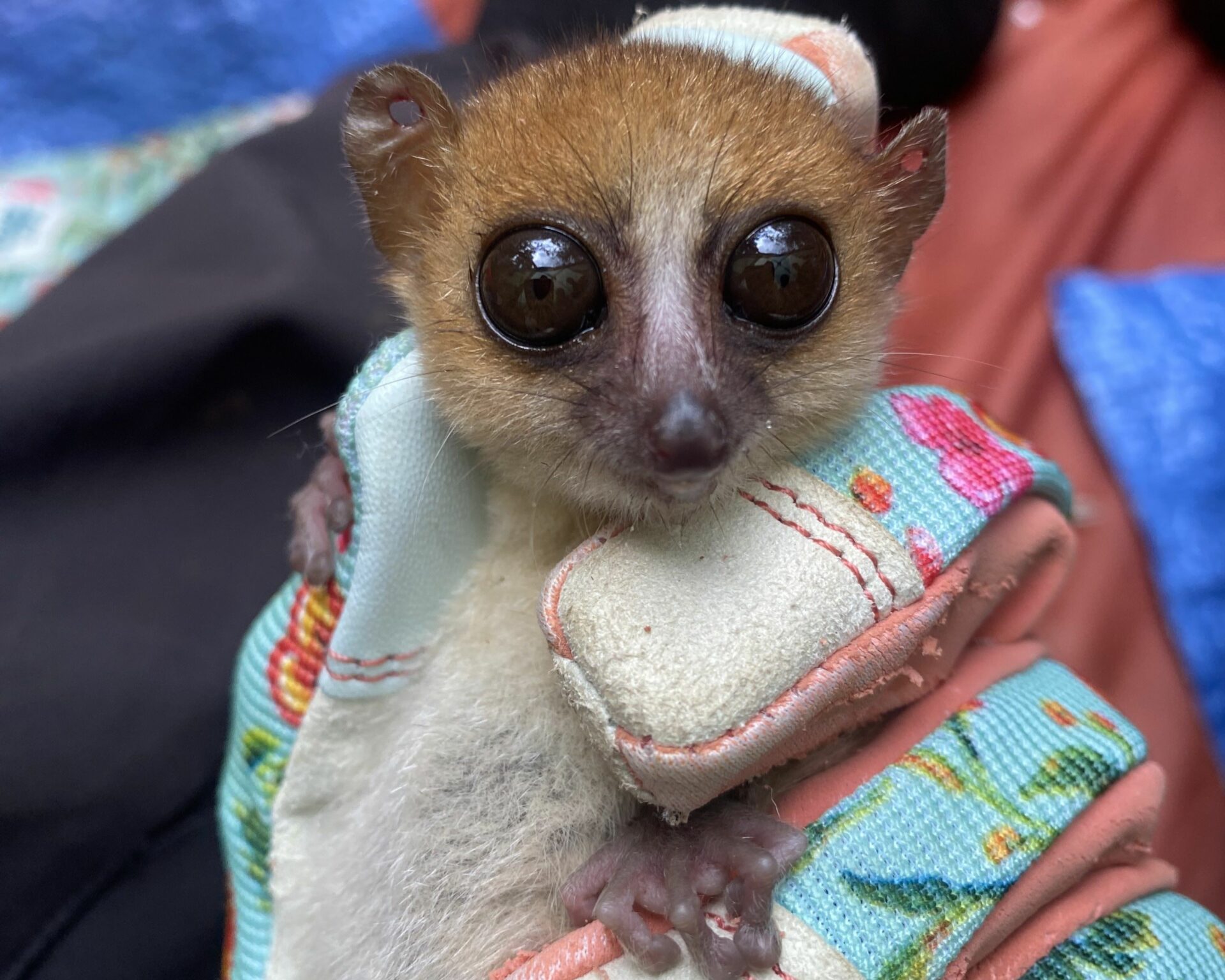
The Anosy Mouse Lemur, an Endangered species, has recently been confirmed to be present at the Ankarabolava-Agnakatrika forests. Credit: Marina Blanco
On the airwaves
MBG-Madagascar went on air to celebrate the official opening of the National Reforestation Campaign, an annual event to reforest Madagascar. The radio broadcast was made with local mayors and kings (known as Mpanjaka) and described MBG-Madagascar’s work to expand the Ankarabolava-Agnakatrika Protected Area. It was also played in local schools and community meetings.
Community empowerment forms a key part of MBG-Madagascar’s work, with regular lessons to local school children about the Ankarabolava-Agnakatrika forests and the animals that call this place home.

An environmental education session run and taught by MBG-Madagascar, teaching children about the wonderful plants and animals found within the Ankarabolava-Agnakatrika Protected Area. Credit: David Rajaonarivelo
At WLT, we are very proud of everything our partner MBG-Madagascar has achieved so far this year. Every action they take brings the goal of a thriving rainforest closer to reality. A forest rich with the sounds of birds, calls of lemurs, and croaks of frogs. A forest that is resilient and there for both wildlife and people.
You can learn more about what MBG-Madagascar do and how you can help, here.
